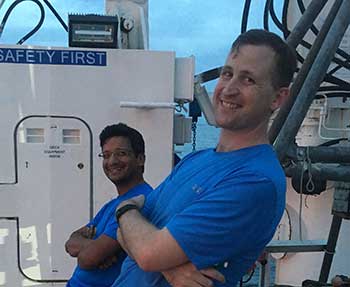
The Krause laboratory just finished the first of two research cruises for the Coastal LouisianA Silicon Cycling (CLASiC) project funded by the National Science Foundation (OCE 1558957).
Silicon is an essential element for one of the most important phytoplankton groups, diatoms. Agricultural activity in the Mississippi River watershed has resulted in increased nitrogen input to the river in the last half century, with no major change in silicon; this nitrogen loading has be hypothesized to change which diatoms bloom on the Louisiana shelf (the outflow region for the Mississippi River) and, in turn, alter the health of fish prey which prefer certain diatoms as food.
The Krause laboratory at Dauphin Island Sea Lab & University of South Alabama led a team with colleagues from Louisiana State University, Rutgers University, University of Alabama Birmingham and Bowling Green State University aboard the Research Vessel Pelican out of Cocodrie, LA for a 10-day research trip.
The goal was to study how the element silicon is cycled in the water and sediments within the plume to understand how changes in the river affect plankton “downstream” on the Louisiana Shelf.
Krause and his main collaborator, Dr. Kanchan Maiti (LSU; both pictured, photo credit: Rebecca Pickering-Turner), first met in 2004 aboard the R/V Oceanus during their first research cruise southeast of Bermuda and Krause was a co-author on one of Dr. Maiti’s publications from this cruise in 2009. Dr. Maiti is an expert sediment geochemist and combining his expertise with that of Krause, who focuses on water-column work, made for a great partnership.
The next CLASiC cruise sets sail in May 2017.